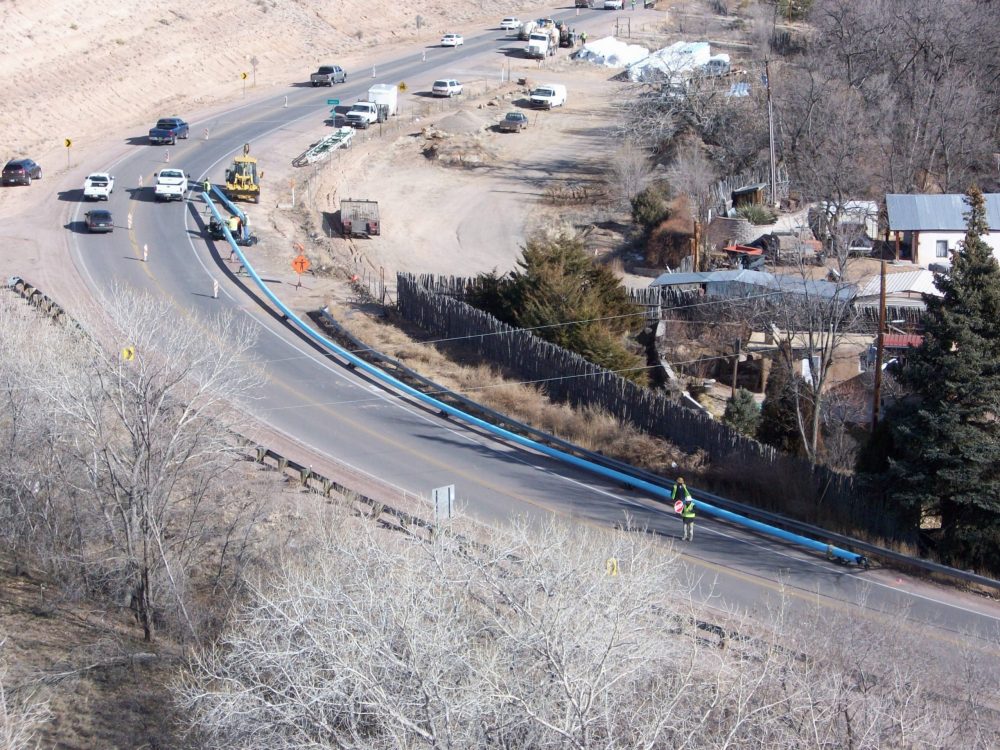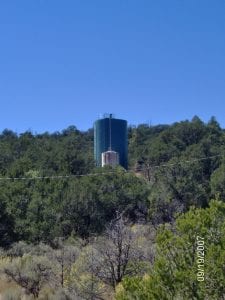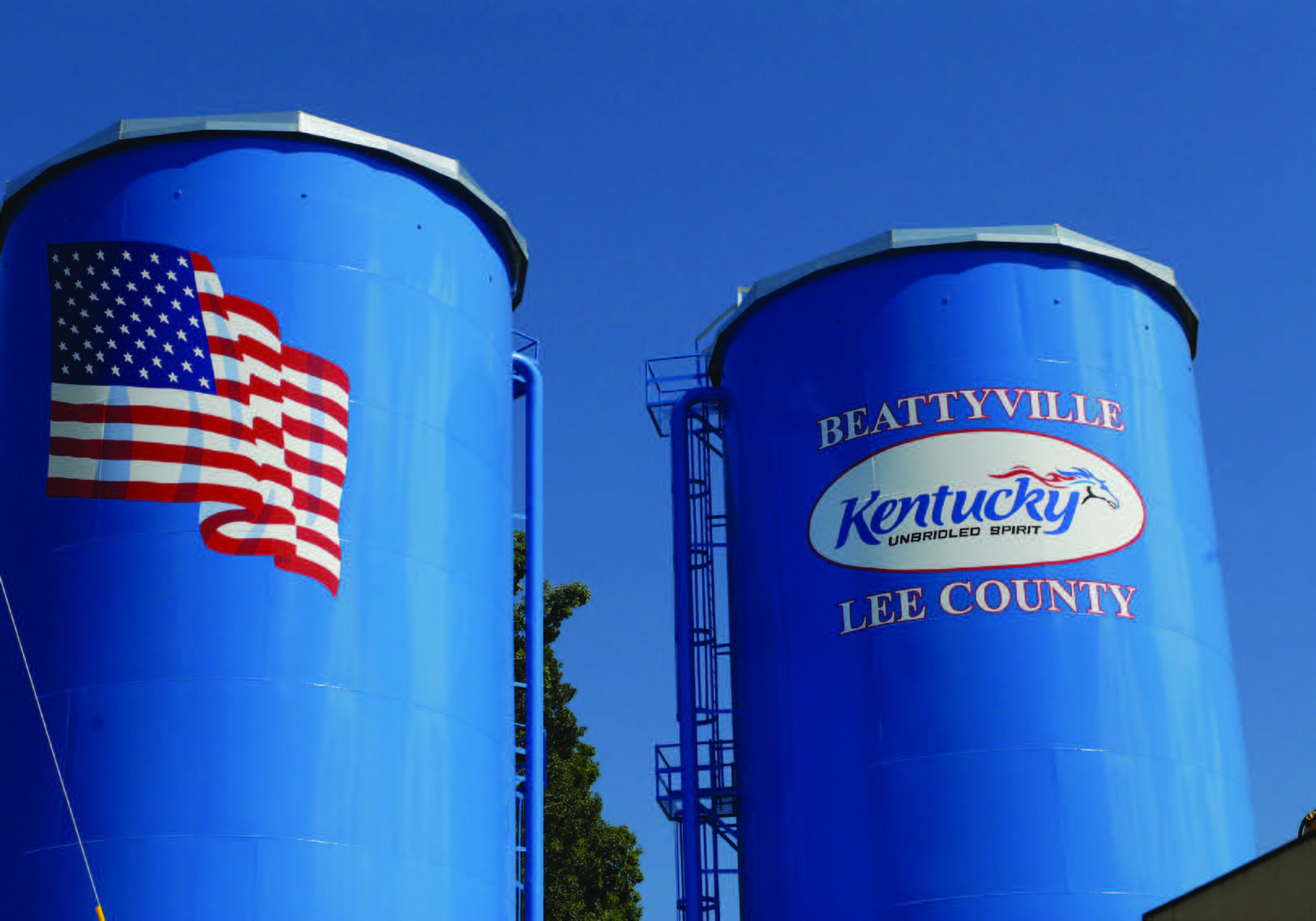
A water line connecting two of the colonias in the Rio Grande Valley is under construction. Photo courtesy of Stan Keasling
Though they vary in many ways, communities throughout Appalachia, the Deep South, unincorporated colonias on the U.S.–Mexico border, California’s Central Valley, and Indian Country share many things in common as well. These areas all have talented community leaders who want their communities to thrive, and parents who want to offer their children a life where there’s opportunity and hope. Unfortunately, these rural regions also face constrained opportunities after decades of disinvestment, which can lead to despair and loss of community pride.
In spite of more than 50 years of social programs that were designed to be a War on Poverty, nearly 400 counties in the U.S. continue to experience persistent poverty, a term used to describe areas where more than 20 percent of the population has lived in poverty for over 30 years. Most of these counties are in the aforementioned regions.
Each of these areas also has regional community development financial institutions (CDFI) that have provided affordable financial solutions to strengthen the capacity of vulnerable individuals and communities. Our organizations—the Rural Community Assistance Corporation (RCAC) and Fahe—have been doing this work for over 30 years. Unfortunately, our independent efforts to alleviate entrenched poverty have fallen short due to the absence of adequate and reliable financial resources that are required to help local organizations achieve scale, efficiency, and sustainability.
In 2014 at a Housing Assistance Council (HAC) conference, we and several other regional CDFIs started talking with national rural-focused groups, including HAC NeighborWorks Rural Initiatives and Rural LISC, about whether a collaborative effort could do more than any of the regional CDFIs could do alone, complementing and leveraging the others’ voices and respective capabilities.
At the end of 2015, the Persistent Poverty Working Group, now known as Partners for Rural Transformation (PRT), began meeting. PRT is a national coalition of about a dozen community development financial institutions, CDCs, and financial intermediaries that have a direct connection to local leaders who are creating change in persistent poverty communities. PRT is led by a steering committee composed of RCAC (Central Valley), Fahe (Appalachia), HOPE Enterprise Corporation (Delta), Community Development Corporation of Brownsville (Texas colonias), First Nations Oweesta Corporation (Indian Country), and Communities Unlimited (South). PRT has gotten some funding to support the process of coming together as a coalition from NeighborWorks America and the Robert Wood Johnson Foundation.
PRT member organizations address the issues affecting their respective populations in different ways, and as a group, PRT does not overlook those differences. However, member organizations primarily focus on their similarities in order to build trust with each other. And building trust isn’t something that happens quickly, which is why it took some time for PRT to form. So far, aside from one major collaboration with the United States Department of Agriculture (USDA), PRT has primarily focused on building trust and relationships, and learning from each other in order to develop a policy platform and narrative that we can jointly present to the public and philanthropic sectors. As the saying goes, “If you want to go fast, go alone. But if you want to go far, go with friends.”
PRT holds virtual meetings every two weeks, and three to six face-to-face meetings each year, traveling to each other’s regions rather than taking the path of least resistance and carving meeting time out of national conferences everyone attends.
Given this commitment to building relationships, the stock of trust is high and PRT member organizations can easily share not only knowledge, and expertise, but details of their successes and failures that would ordinarily be unavailable to their colleagues. They’ve also decided to approach foundations together to present a consistent narrative about needs in the region, playing a long game of perception-changing over short-term competing over funds.
Building on Previous Projects
Securing new funding and distributing money more efficiently to nonprofits in regions that have experienced persistent poverty are PRT’s primary federal-level policy goals. PRT’s major program so far grew out of a similar project that two PRT members undertook in the aftermath of the mortgage crisis.
The USDA’s 502 Direct Loan mortgage program has been a cornerstone for many low- and very-low-income people and families in rural areas. However, the USDA’s rural development budget has been cut repeatedly, which has greatly reduced the staff and resources needed to properly deliver 502 funds. In 2009 the American Recovery and Reinvestment Act (ARRA, or “The Stimulus”) significantly increased funding for 502 Direct Loan mortgages in an attempt to mitigate the effect of the housing crisis on low-income rural households. However, this solution did not address the capacity of an already burdened USDA Rural Development staff. In order for the program to achieve its intended effect, ARRA funds would need to be distributed to rural households in less than two years, something the current staff did not have the capacity to do.
So in early 2009, RCAC and Fahe approached the USDA’s Office of Rural Development (RD) to propose a 502 Pilot program where financial intermediaries such as their own organizations would significantly expedite the loan process by creating a packaging system.
The 502 Pilot allowed USDA certified organizations to package loans and designated intermediaries to certify the creditworthiness of the applicants to RD-specified standards and conditional underwriting. This dramatically reduced the turn-around time for approving loan packages, and allowed rural development staff to focus only on viable borrowers. In turn, nonprofit partners that were packaging loans earned fees for their service, meaning participation bolstered their financial sustainability.
Due to the overwhelming success of the pilot program (the Fahe network alone packaged and delivered 732 loans totaling over $86.4 million), it was made permanent in 2016. The program, now known as the 502 Direct Packaging Program, has delivered more than $300 million in housing USDA 502 Direct Loans to more than 2,400 families in and around persistent poverty regions in the nation.
Aside from the actual loans it delivered, this program was the first time RCAC and Fahe had worked together to this degree, and staff at each organization saw the potential for future collaborations, especially with a federal agency as a partner.
Building on that previous work of two of its members, in 2016, PRT was able to work with USDA and the Mary Reynolds Babcock Foundation to create a public-private partnership called the Uplift America Fund. The fund combines a set-aside of funding from the USDA’s Community Facilities (CF) program—made available to qualified CDFIs for essential infrastructure projects—with grants from a pool established by the Mary Reynolds Babcock Foundation. CF funds had been underutilized in prior years and PRT saw an opportunity to partner with USDA to craft an approach (the CF Relending Program) that would help direct the funds to persistent poverty communities. The inaugural round of loans was $500 million and funds all sorts of community facilities, such as homeless shelters, YMCAs, and addiction recovery centers.
Fahe was able to deliver an Uplift America/CFR loan for Fahe member Beattyville Housing and Development Corporation (BHDC) in Lee County, Kentucky, which allowed the organization to acquire and transform an existing structure into a much-needed homeless shelter with one-on-one case management, educational services including Narcotics Anonymous, and transitional services to allow clients to find stable housing and employment.
Although the Uplift America Fund was a huge success in terms of more effectively getting public resources into persistent poverty areas, it was also somewhat unexpected, and came early on in PRT’s development, before the coalition had settled on a strategy. The coalition already took a lot of uncompensated CEO time, as the coalition’s direct support is so far modest, and the project took significant attention to implement. To some extent, PRT was the dog who caught the car, and became somewhat distracted by the win. PRT is now moving forward with strategic planning, but our advice to other groups forming a collaboration is to develop a strategy early, have a solid plan from the beginning, and don’t let successes distract you from what comes next.
Drawing a Policy Agenda from Member Experiences
One of PRT’s goals is to develop a policy agenda that supports the replication of successes that PRT members have achieved. An example is the regionalization of water authorities. Two PRT organizations—RCAC and Communities Unlimited—provide services to communities with small water and wastewater utilities to help them upgrade facilities and improve management and financial practices. One of the newer strategies the two organizations have pursued is called regionalization, where two or more utilities share services, staff, or management.

A new water tank towers over the old rusted tank in a colonia in the lower Rio Grande valley. Photo courtesy of Stan Keasling
In the lower Rio Grande Valley in New Mexico, between Las Cruces and the Texas border, RCAC helped five small colonias—ranging in size from 500 and 3,000 people—come together so the communities could have a reliable supply of safe drinking water and fire protection. Beginning in 2012 the colonias embarked on a journey that required state legislation before a merged water company was created in 2015. The collaboration resulted in major improvements to the water systems in each of the colonias and created a large-enough customer base to afford professional utility management that is capable of meeting the long-term needs of the communities. RCAC facilitated the merger process, assessed the financial implications of the merger for all parties, negotiated deal points between the systems, drafted state legislation to authorize the merger, and prepared funding applications to build interconnections between the communities. The whole process took about three years before construction was ready to begin.
As a result of the new system, and literally as soon as adequate water was available for fire protection purposes, new businesses began to move into the area, including businesses that provide access to fresh foods and an urgent care clinic. These businesses provided hundreds of new employment opportunities for residents. Also, for the first time in decades, more than 50 new homes were built in the area.
The collaborative process of forming the combined utility helped build the leadership capacity of the communities in part because of the regionalization process, where representatives of the various systems went through leadership training conducted by RCAC. These new skills were essential to the success of the partnership, and the success of this venture has led to new optimism among residents about their ability to change the narrative in their communities. The combined utility completed tens of millions of dollars of improvements to the water systems and quickly began the planning process to provide sewer service. The construction activity itself was an economic engine for the region.
Since then, eight other small colonias have joined the regional system to bring new vitality to their communities. The regional cooperation—dubbed the Lower Rio Grande Public Water Works Authority (LRGWWA)—has become a model for small community collaboration.
The success of LRGWWA was a major force in securing new resources from the State of New Mexico to address the utility needs of all colonias, and helped spur a new commitment by the Rural Utility Service of USDA to target more resources to colonias along the U.S.-Mexico border. In the process, RCAC and Communities Unlimited learned a lot about policies and regulations that can both constrain and facilitate regionalization of water systems, which they have shared with other PRT members who are interested in the potential of the approach. PRT as a group is now discussing how to use its joint platform to push USDA to encourage regionalization, to encourage water systems to consider it for themselves, and to develop model state policies that support regionalization. This is an example of the way we expect PRT’s agenda to grow out of the work of its members and the local leaders those members work with.
PRT Looks to the Future
PRT is finishing up its strategic plan, which will give a framework for the policy, impact, narrative, and civic engagement needed to bring new vibrancy to places of persistent poverty. The plan will pull together PRT members’ strengths and collective impact and help the group expand the impact its members have already made in specific regions to the country as a whole.
On the policy front, the coalition will continue to promote the “10-20-30” formula, an approach to funding the federal budget that positively influences the flow of funding to persistent poverty areas. The formula dictates that at least 10 percent of rural development investments go toward counties where 20 percent or more of the population has lived below the poverty line for the last 30 years. The formula was first implemented in the American Recovery and Reinvestment Act of 2009 and is present in current USDA and treasury regulations. Since 2016, PRT has advocated for its expansion and inclusion into the regulatory language of other federal agencies, such as HUD.
The coalition’s goal is to go further than any group has gone by itself. PRT gives a voice to the moral imperative to eliminate persistent poverty. We cannot continue to allow our society to ignore the conditions that leave millions of Americans without hope.






All of these areas have an adopted “comprehensive strategic plan” already, regional in scope, approved by EDA. Individual communities might also have adopted “comprehensive”, “vision”, or “strategic” plans. These are great efforts born of necessity, but I continue to see A LOT of overlap & duplication, not that their priorities are the same. All of these great plans are funded in some fashion — is it possible to combine forces for a change? I would focus on impacts & outcomes rather than get excited about funding a program, project, initiative, or “innovation”.